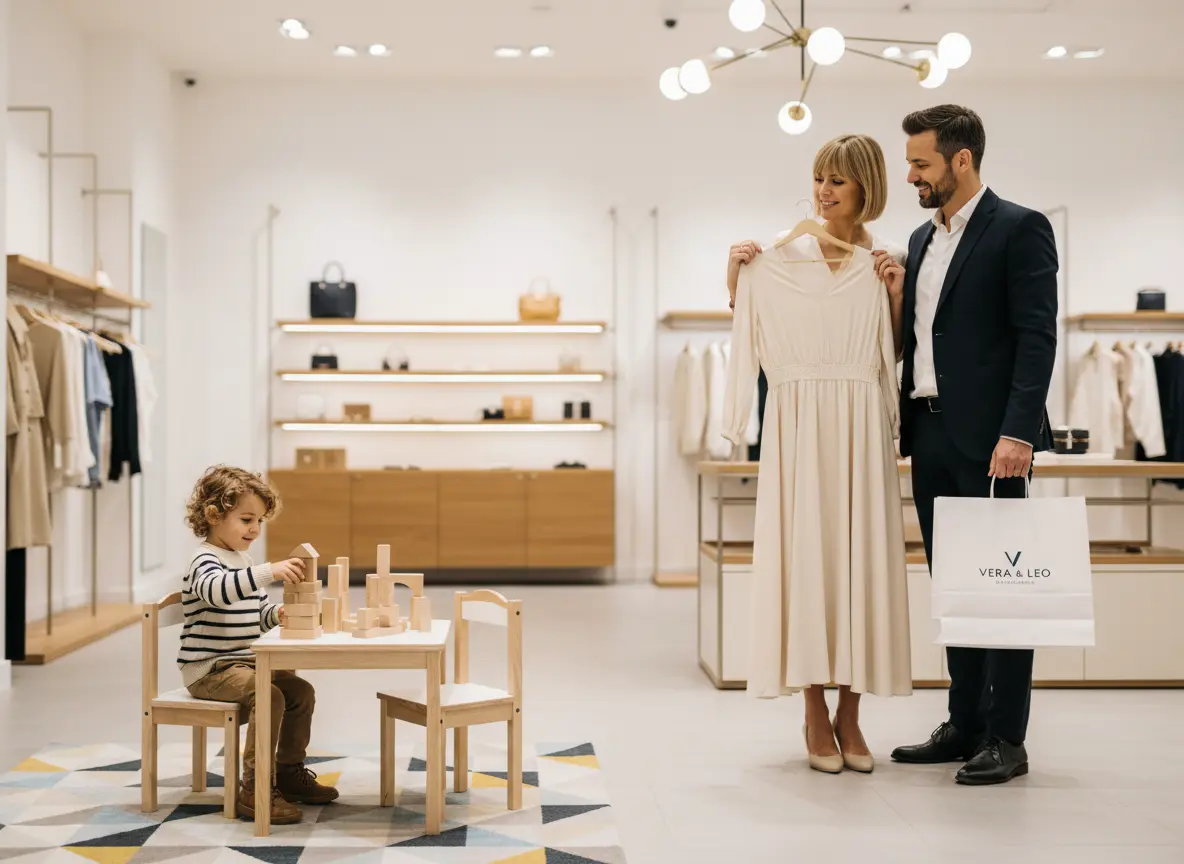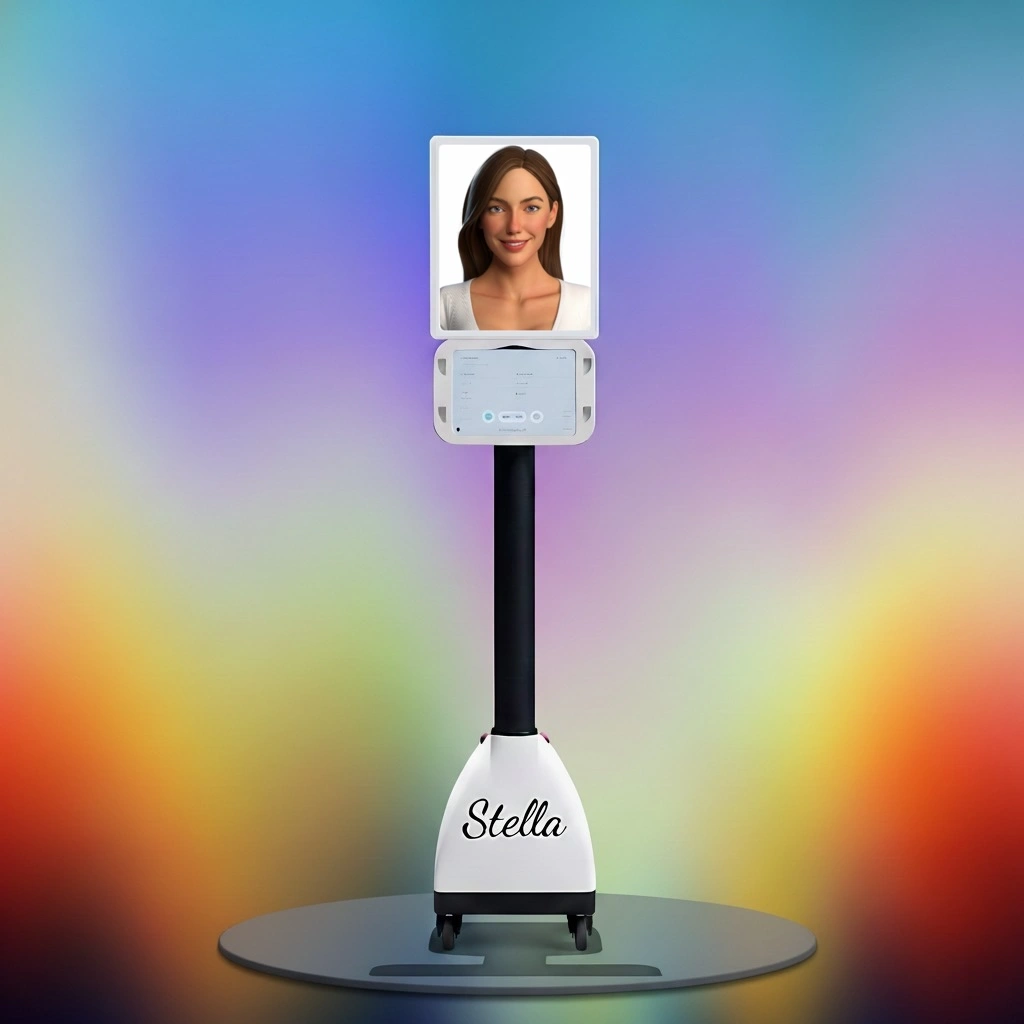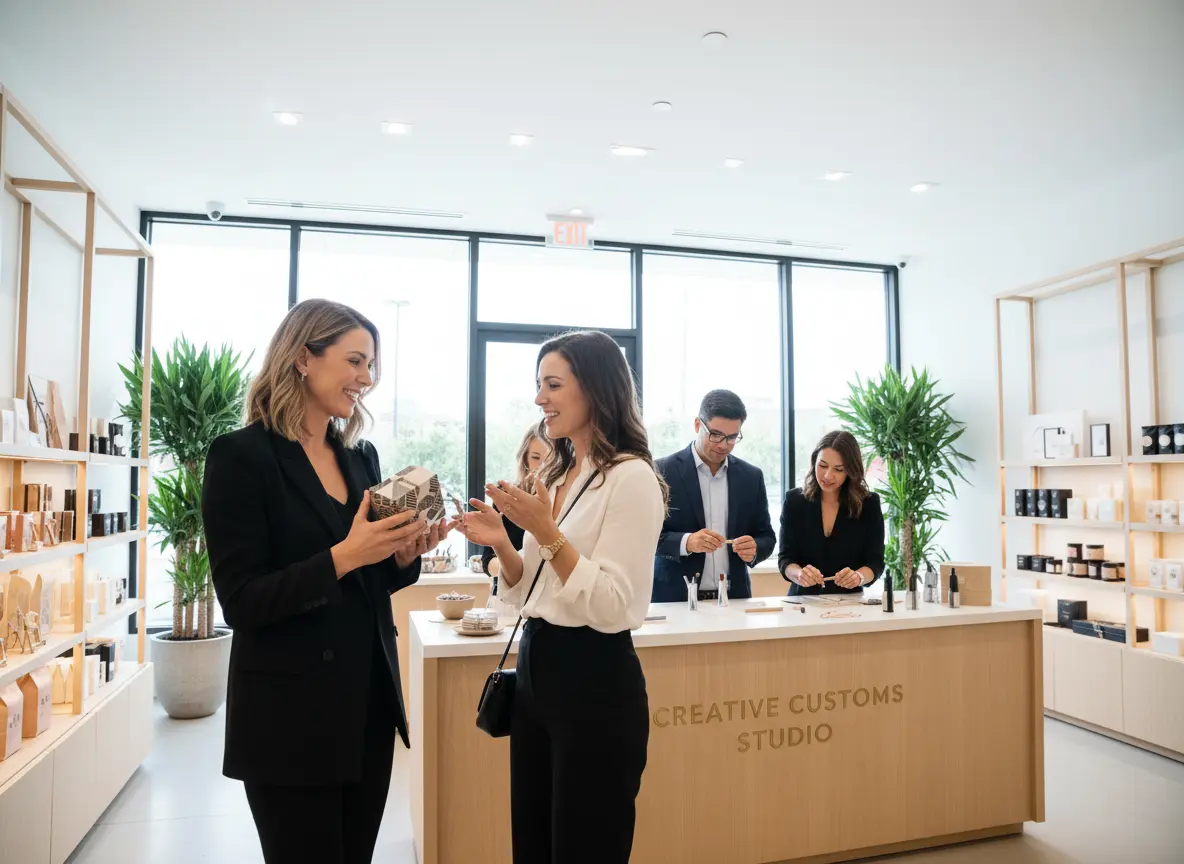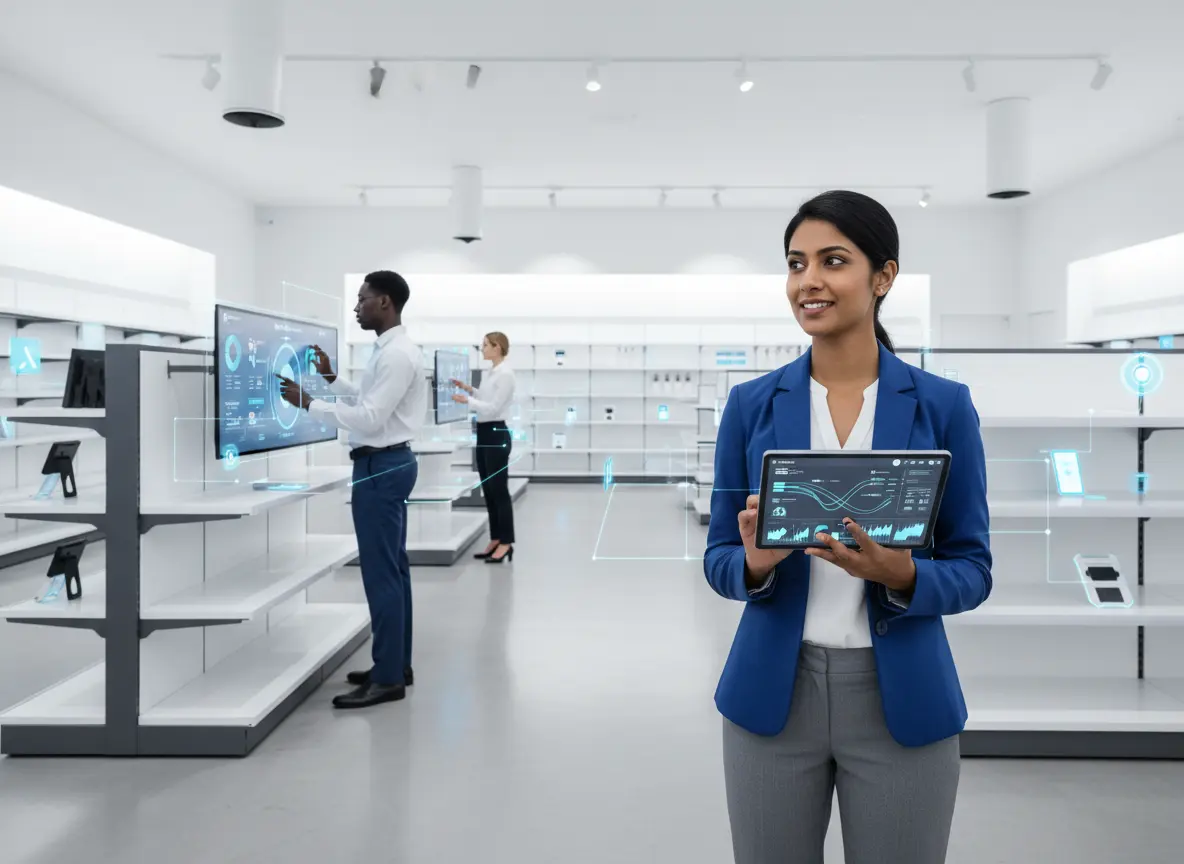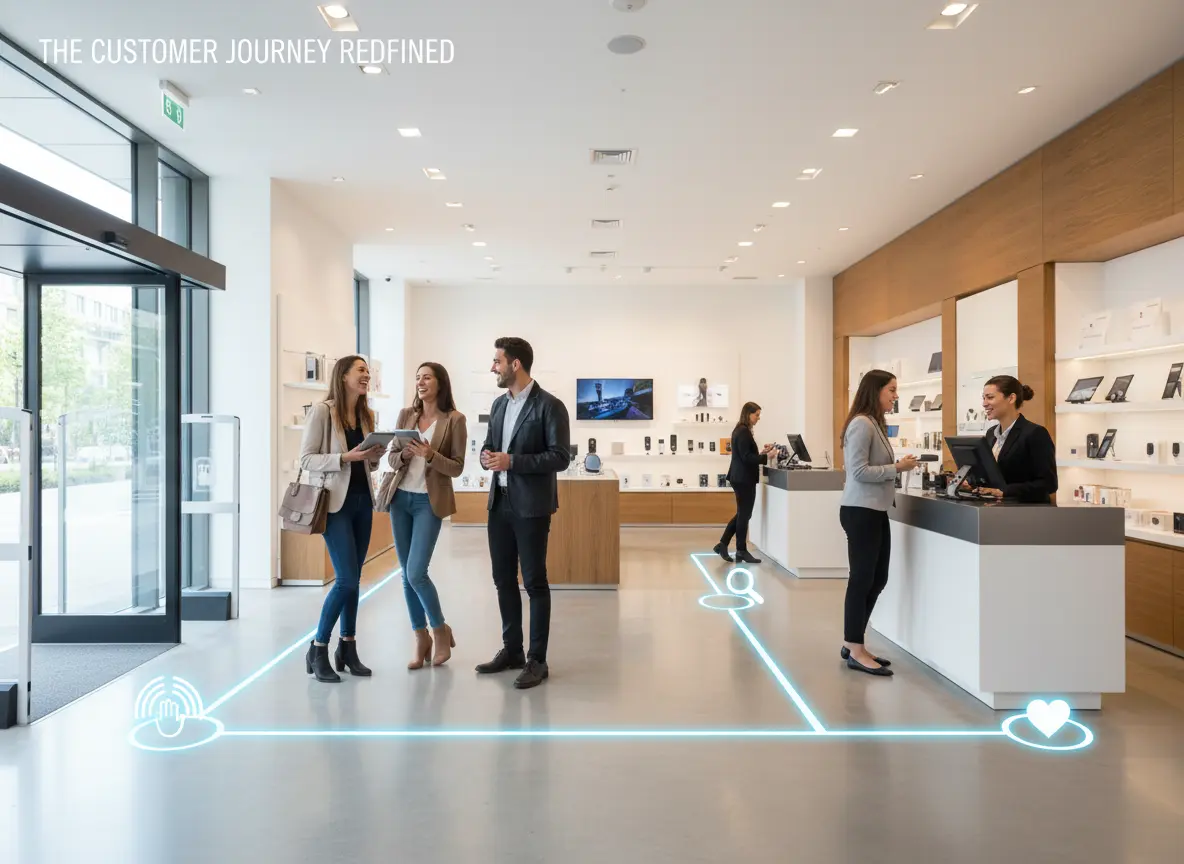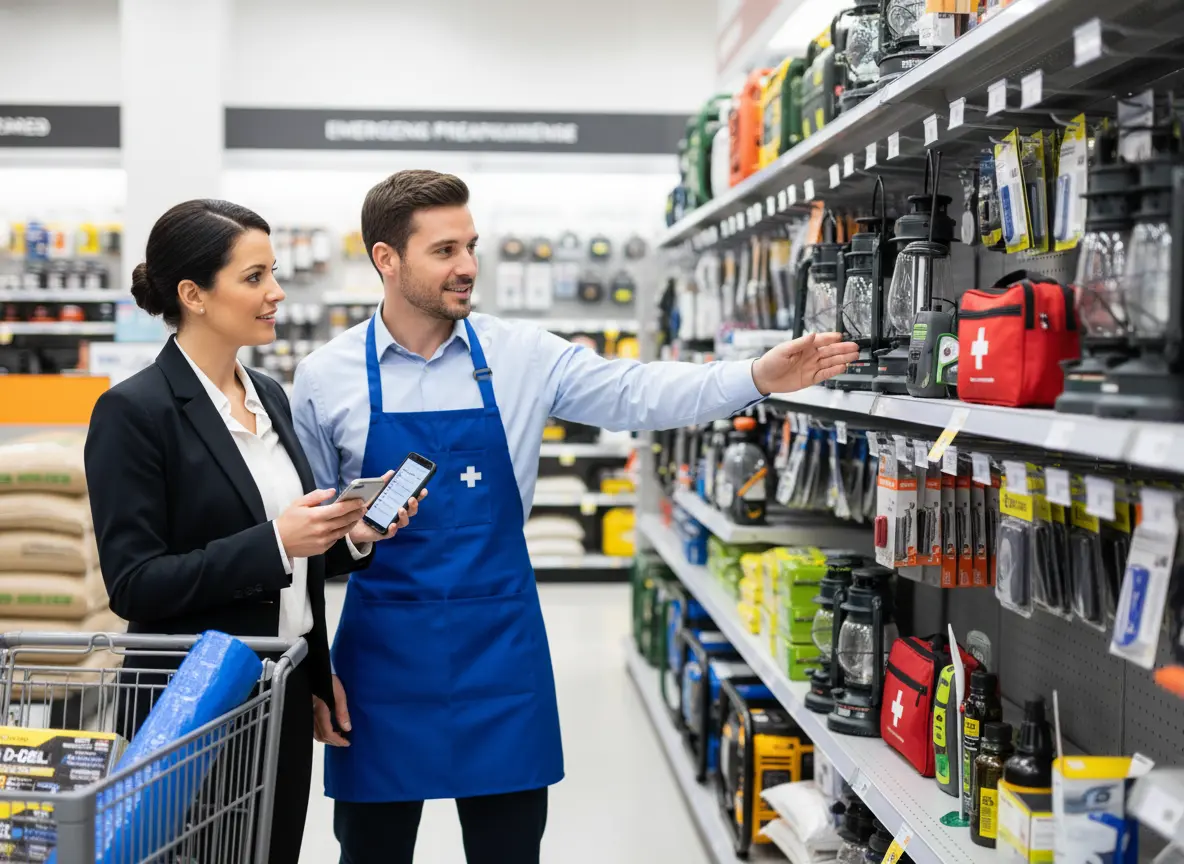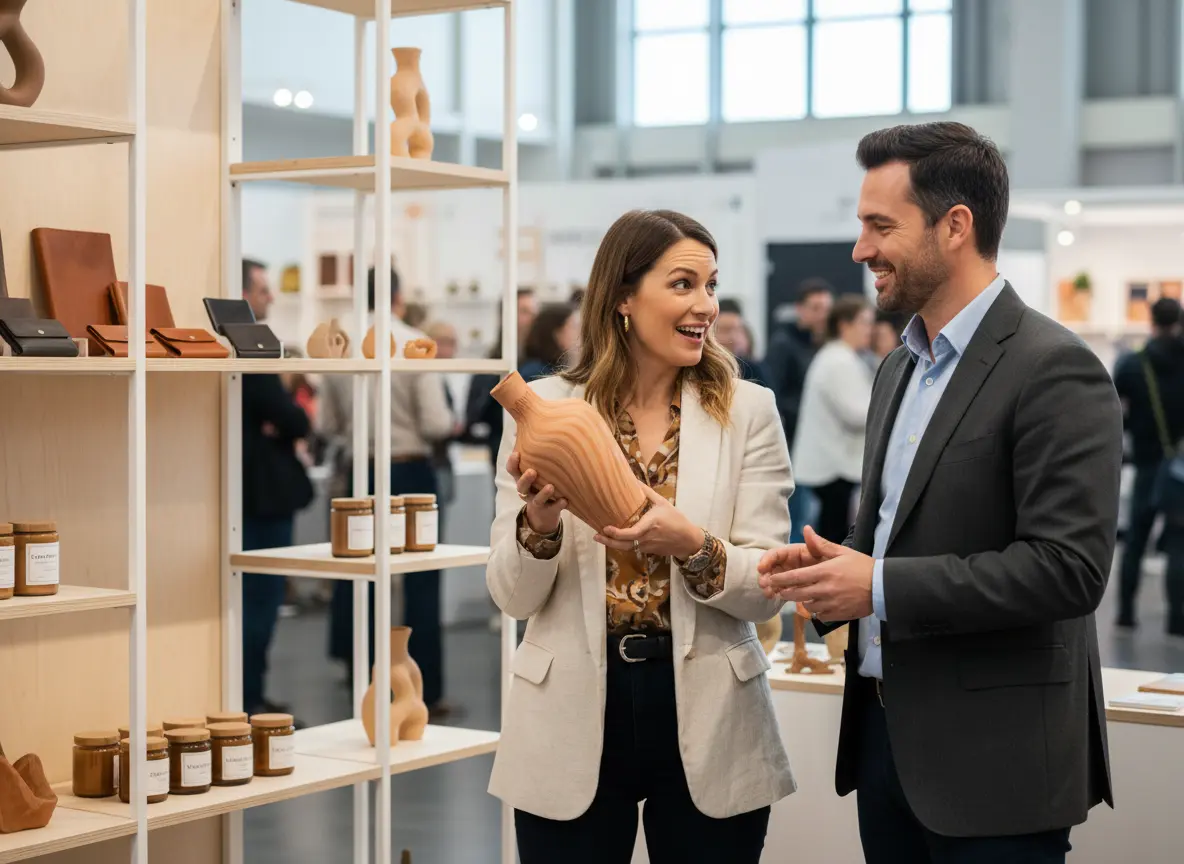The Screaming Toddler in Aisle Four: Your Unlikely Sales Catalyst
Let’s paint a picture. It’s 3 PM on a Tuesday. A parent walks in, looking determined. They have a shopping list, a credit card, and the desperate energy of someone who has 20 minutes of freedom. But there’s a catch. Attached to their leg is a small, sticky-fingered human who has just discovered the resonant power of their own voice and has decided that your serene, beautifully merchandised store is the perfect concert hall.
We’ve all seen it. The frantic negotiation. The promises of ice cream. The inevitable surrender as the parent grabs the one thing they came for and flees, abandoning a cart full of potential purchases. That sound you hear? It’s not just a tantrum; it’s the sound of lost revenue and a customer experience that’s gone completely off the rails.
But what if there was a simple, low-cost way to turn that screaming toddler into a silent partner in profit? What if you could transform a parent’s stressful dash into a leisurely browse? Enter the humble, oft-overlooked, and criminally underutilized secret weapon: the kids' corner. It sounds simple, almost too simple. But creating a small, designated space for children isn't just about being "family-friendly"—it's a calculated business strategy that can pay for itself faster than a three-year-old can unspool a roll of toilet paper.
Why Your Bottom Line Secretly Loves Play-Doh
Before you dismiss this as just another to-do list item, let's talk numbers and psychology. A kids' corner is not an expense; it's an investment with a surprisingly direct return. When you cater to the smallest members of the family, you’re actually catering to the person with the wallet.
The 'Peace & Quiet' Profit Margin
Parents are master multi-taskers, but even they have limits. When a child is occupied and content, the parent's cognitive load plummets. They can shift from "crisis management mode" to "browsing mode." This shift is where the magic happens. A study by family-focused marketing experts found that 80% of parents say they would stay in a store longer if their children were happily entertained. Longer stays, or "dwell time," directly correlate with higher average transaction values. When a parent has an extra 10 or 15 minutes of peace, they don’t just buy what they need; they buy what they want. They notice the cross-sells, they consider the impulse buys near the register, and they remember why they liked your store in the first place.
Building a Brand That Babysits (Sort of)
In today's market, loyalty is everything. What makes a customer choose your store over the soulless online giant or the big-box down the street? Experience. Providing a kids' corner sends a powerful message: "We see you. We get it. We've got your back." That small gesture of empathy builds an emotional connection. Parents remember the store where their kid didn't have a meltdown. They tell other parents. Your store becomes the default choice not just for its products, but for its understanding of their reality. You're no longer just a shop; you're a solution to the daily chaos of family life.
Pre-Emptive Damage Control
Let's be brutally honest. Kids touch things. They run. They treat displays like jungle gyms and fragile merchandise like chew toys. A dedicated play area acts as a powerful magnet, drawing that chaotic energy into a safe, contained, and—most importantly—unbreakable zone. You’ll spend less time refolding shirts, re-stacking displays, and nervously eyeing a toddler who seems a little too interested in that glass sculpture. The cost of a few coloring books and a small table is infinitesimal compared to the cost of one piece of damaged high-margin inventory.
Your Automated Assistant for the Overwhelmed Parent
Creating a great experience for families is a two-part equation: keep the kids happy and make shopping easy for the parents. While the little ones are busy constructing a masterpiece with building blocks, you still need to engage the adults effectively and efficiently, especially when your staff is already stretched thin.
Guiding the Grown-Ups While the Kids are Grounded
This is where an in-store assistant can be a game-changer. Imagine a parent finally gets a moment of peace, thanks to your brilliant new kids' corner. They start to browse, but they’re not sure where to find something or if that item they saw online is in stock. Instead of having to hunt down a busy employee, they can get an instant answer. Our robotic retail assistant, Stella, positioned near the entrance or main thoroughfare, can greet that parent and proactively help. While their child is happily occupied just a few feet away, Stella can highlight the day’s promotions, point them toward the new arrivals, or answer questions about return policies. She ensures the parent’s precious moments of calm are spent discovering products, not searching for help.
Crafting the Perfect Pint-Sized Paradise: Dos and Don'ts
Ready to build your own little oasis of calm? It’s easier than you think. But like any good retail strategy, execution is key. A poorly planned kids' corner can be worse than none at all. Here’s how to do it right.
DO: Prioritize Safety and Cleanliness Above All Else
Parents have hawk eyes for two things: safety hazards and germs. Your kids' corner must be unimpeachable on both fronts.
- Safety First: Choose toys without small parts for toddlers (choking hazards are a no-go). Ensure any furniture has rounded corners. Anchor small tables or shelves to the wall if they could be tipped over. Place the area in a high-visibility, low-traffic spot where parents can easily see their child from most of the store.
- Cleanliness is Godliness: Use toys made of non-porous materials like plastic or wood that are easy to wipe down. Have a sanitation station nearby with hand sanitizer and disinfectant wipes. Implement a daily—or even twice-daily—cleaning routine for the area. Parents will absolutely notice and appreciate this effort.
DON'T: Recreate a Full-Blown Amusement Park
More is not better. The goal is to occupy, not overwhelm. A simple, well-curated space is far more effective than a chaotic explosion of toys. Avoid these common pitfalls:
- Noise Machines: Electronic toys with loud sounds and flashing lights will annoy every single other customer in your store. Stick to quiet activities like blocks, puzzles, coloring, or a magnetic drawing board.
- The Glitter Bomb: Just don't. Do not, under any circumstances, introduce glitter, slime, or messy paints. You will regret it. Your cleaning crew will quit. It will be found in the corners of your store for a decade.
- Too Much Clutter: A few high-quality, engaging options are better than a giant bin of random, broken junk. Rotate the toys every few weeks to keep things fresh.
DO: Think Simple, Scalable, and On-Brand
You don’t need a huge budget. Start small and see what works. A small rug, a low table with a couple of stools, and a bucket of Duplo blocks can be incredibly effective. Consider a chalkboard or whiteboard wall for endless creativity. Offer coloring sheets that feature your store's logo or products. It’s a low-key way to reinforce your brand while keeping kids busy.
A Quick Reminder About Your Other In-Store Helper
While a kids' corner is a fantastic way to manage the family shopping dynamic, don't forget about engaging every customer who walks through your door. Our AI retail assistant, Stella, ensures that no shopper goes unnoticed, greeting them warmly, promoting your key offers, and freeing up your human team to provide the detailed, high-touch service that truly sets you apart.
Conclusion: Turn Tantrums into Transactions
The family shopper represents a huge, and often frazzled, segment of your customer base. Ignoring their unique challenges is like leaving money on the table—a table that’s probably being covered in crayon marks as we speak. By investing in a small, thoughtful kids' corner, you’re not just doing parents a favor; you’re making a savvy business decision.
You’re increasing dwell time, boosting average sales, fostering fierce brand loyalty, and reducing in-store chaos. The choice is clear: you can continue to see children as a liability, or you can start seeing them as the key to unlocking the full spending potential of their parents.
Your action plan for this week:
- Identify a small, visible, and safe corner of your store.
- Invest in a few simple, quiet, and easy-to-clean toys or activities.
- Put up a small, friendly sign that says "Little Shoppers' Corner."
That’s it. Take the first step. You'll be amazed at how a little peace and quiet can make a whole lot of noise on your sales report.
